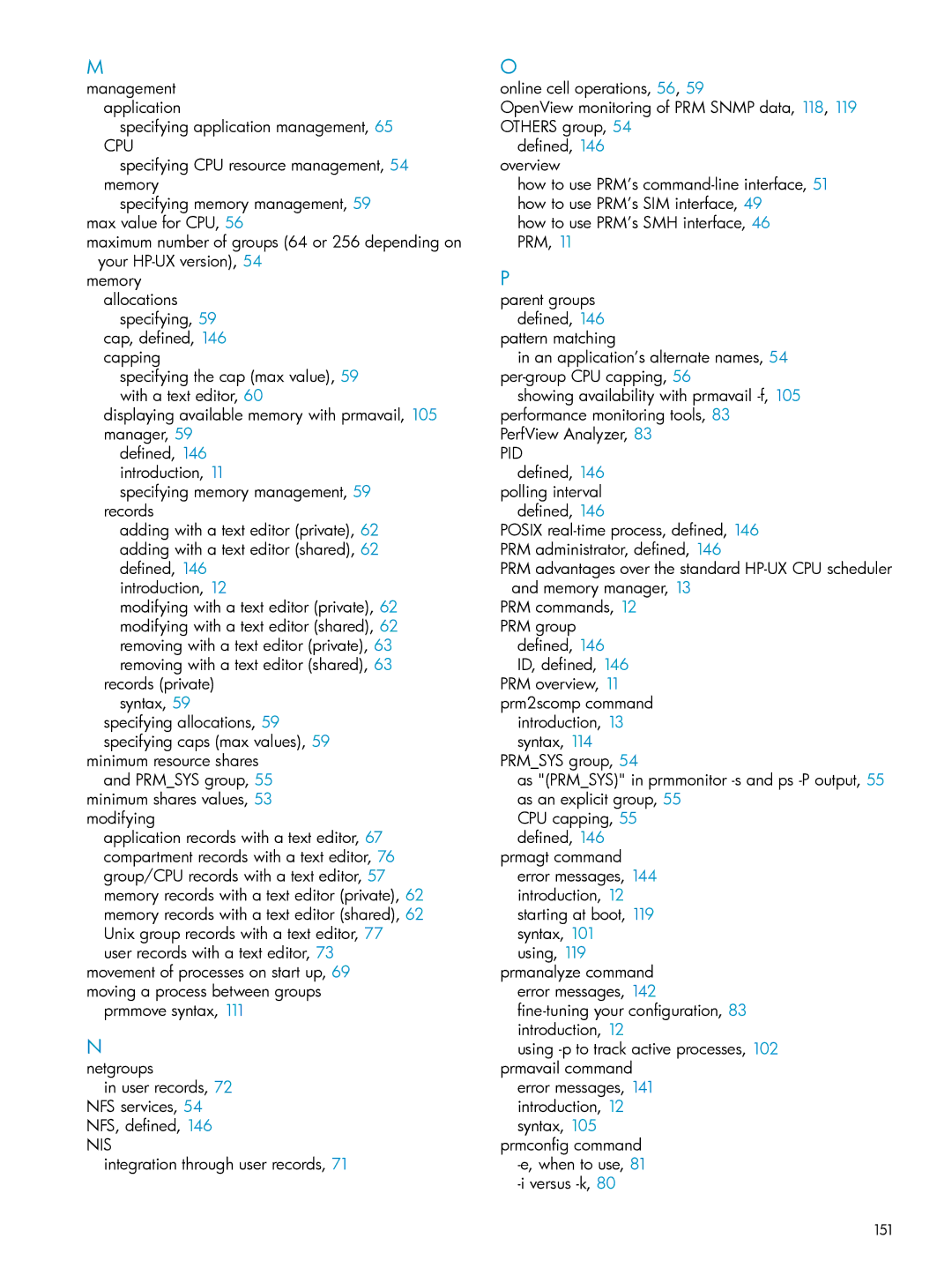M
management application
specifying application management, 65
CPU
specifying CPU resource management, 54 memory
specifying memory management, 59 max value for CPU, 56
maximum number of groups (64 or 256 depending on your
memory allocations
specifying, 59 cap, defined, 146 capping
specifying the cap (max value), 59 with a text editor, 60
displaying available memory with prmavail, 105 manager, 59
defined, 146 introduction, 11
specifying memory management, 59 records
adding with a text editor (private), 62 adding with a text editor (shared), 62 defined, 146
introduction, 12
modifying with a text editor (private), 62 modifying with a text editor (shared), 62 removing with a text editor (private), 63 removing with a text editor (shared), 63
records (private) syntax, 59
specifying allocations, 59 specifying caps (max values), 59
minimum resource shares and PRM_SYS group, 55
minimum shares values, 53 modifying
application records with a text editor, 67 compartment records with a text editor, 76 group/CPU records with a text editor, 57 memory records with a text editor (private), 62 memory records with a text editor (shared), 62 Unix group records with a text editor, 77 user records with a text editor, 73
movement of processes on start up, 69 moving a process between groups
prmmove syntax, 111
N
netgroups
in user records, 72 NFS services, 54 NFS, defined, 146
NIS
integration through user records, 71
O
online cell operations, 56, 59
OpenView monitoring of PRM SNMP data, 118, 119 OTHERS group, 54
defined, 146 overview
how to use PRM’s
how to use PRM’s SMH interface, 46 PRM, 11
P
parent groups defined, 146
pattern matching
in an application’s alternate names, 54
showing availability with prmavail
PID
defined, 146 polling interval defined, 146
POSIX
PRM advantages over the standard
PRM commands, 12 PRM group
defined, 146 ID, defined, 146
PRM overview, 11 prm2scomp command
introduction, 13 syntax, 114
PRM_SYS group, 54
as "(PRM_SYS)" in prmmonitor
CPU capping, 55 defined, 146
prmagt command error messages, 144 introduction, 12 starting at boot, 119 syntax, 101
using, 119 prmanalyze command
error messages, 142
using
error messages, 141 introduction, 12 syntax, 105
prmconfig command
151
